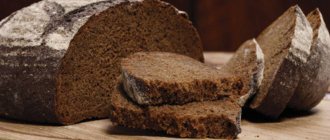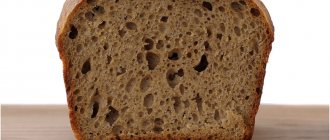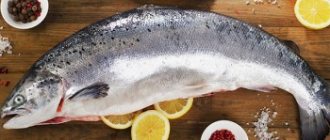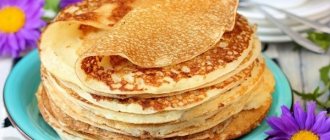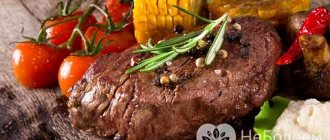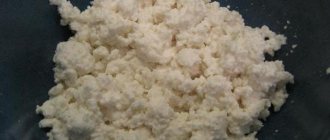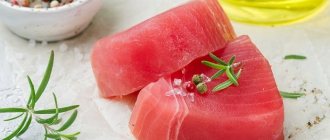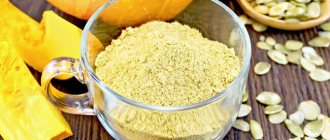For thousands of years, humanity has treated bread as a source of strength, health, and prosperity. But since the beginning of the eighties of the last century, people more often associate problems of overweight or obesity, leading to serious diseases, with the consumption of high-calorie products.
Statistics record sad facts: overweight and obesity have reached global epidemic proportions. Doctors sounded the alarm, and ardent supporters of a healthy diet added all bakery products to the list of “harmful” foods due to their highest calorie content. But the reason for the continuous increase in the number of overweight people does not lie in the calorie content of bread: it is multifaceted.
Don’t rush to exclude baked goods from your diet when thinking about diets. You might as well give up many high-calorie foods! Let's figure it out.
Types of bread: features and calorie composition
To understand how many calories are in bread, to determine for yourself the rate of its consumption, you need to find out what is included in the baked goods, what type of flour was used in it . To a large extent, the change in the calorie content of a product is also influenced by the technology of its preparation .
The table below shows the most common types of baked goods and indicates the calorie content per 100 g of product:
| Type of bread | Calories per 100 g | Proteins fats carbohydrates |
| Rye | 250 | 13/ 3/ 40 |
| Yeast-free | 236 | 7,9/ 1/ 47,6 |
| Whole grain rye flour with malt | 198 | 7,8/ 1/ 39,6 |
| Grey | 227 | 7,5/ 1,3/ 45,2 |
| Darnitsky | 206 | 6,6/ 1,1/ 41 |
| Borodinsky | 208 | 6,9/ 1,3/ 40,9 |
| Molded from rye flour | 217 | 5,9/ 1,1/ 44,5 |
| Wheat-rye (“Ukrainian”) | 198 | 6,6/ 1,2/ 39,6 |
| With bran from wheat flour | 252 | 9,6/ 2,7/ 47,1 |
| Wheat, made from premium flour | 242 | 8,1/ 1/ 48,8 |
| Whole grain (Capital) | 210 | 7/ 1,2/ 45,8 |
Starch is a complex polysaccharide, a carbohydrate, which, when in excess in the body, forms adipose tissue.
The benefits and calorie content of baked goods can only be judged by taking into account the biochemical content of flour. Grain, according to modern standards, is cleaned from the outer shell, which contains the most valuable fiber, rich in vitamins and minerals responsible for a balanced metabolism in the body. The inner part of the grain (kernel) consists of starch and nitrogenous compounds - a soft, mealy core.
Expensive premium wheat flour contains starch and nitrogenous compounds, which make excellent baked goods, but in fact, first grade flour, coarsely ground, containing bran, is of greater value in dietary nutrition than finely ground wheat flour without impurities (bran).
Wheat bread with added bran, containing more calories, is a more valuable and balanced product, since fiber (the hard shell of the grain) regulates the digestion process. The variety of breads containing different ratios of rye, bran and wheat flour also matters when counting calories, as does the type of wheat from which the flour is made.
Perhaps our ancestors did not gain weight because they baked bread from whole grain flour, since they did not know the technologies that brought flour to a refined state.
A complete refusal of the product is unlikely to get rid of extra pounds. Rather, it’s the other way around: a ban causes internal protest, and creating psychological dissonance does not contribute to achieving results—you can’t fool nature.
Understanding the essence of the problem is the beginning of overcoming it. Therefore, we will consider the most compelling reasons leading to excess weight. The truth is in the middle.
Psychological and social aspects
The high calorie content of bread contributes to the accumulation of energy in the body, which, in the absence of physical activity, accumulates under the skin in the form of “strategic reserves” in case of power outages.
This is not a joke, but a law of nature, with which it is useless to argue: instincts, conditioned, unconditioned reflexes exist and continue to work, despite the excessive self-confidence of people who consider themselves its creators.
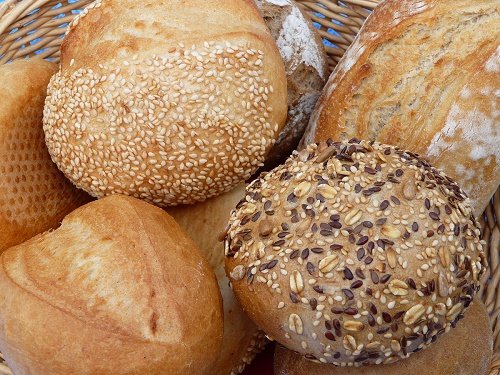
Since the mid-twentieth century, external factors have changed dramatically: in the struggle for survival, man has created a comfortable living environment for himself, and has put technological progress at the service, eliminating the need for hard physical labor for his own survival. But, having obtained the “easy bread”, people did not find the ideal formula for combining molecular technologies with the genetic code given by nature for the survival of humanity as a biological species.
Since people learned to hunt and domesticated animals, meat and butter were available only to the nobility.
Bread remains the most accessible product for all social groups in all countries of the world.
The predominance of flour products in the people's diet has become an acquired instinct, which is triggered even now, in cases of unstable financial situation in an individual family or even on a national scale during periods of economic crisis.
The thousand-year habit of saturating the body with the most high-calorie, available food has been preserved on a subconscious level. Fresh bread crust in combination with your favorite, equally high-calorie delicacies triggers the mechanism of natural instinct, and the sandwich overshadows thoughts about the fight against excess weight.
Remember that food is primarily a source of energy, not pleasure. Energy expenditure should correspond to the total number of calories consumed, including bread.
Bread and exercise
Modern technologies have taught people that there is no need to get food through hard work - just press a few buttons, order a hamburger or pizza directly to the office, without breaking away from monotonous work that does not require physical effort. The same situation is repeated at home, after a working day: snacks in front of the TV screen often also consist of foods high in calories.
You can talk about the “harm of bread” for your figure, look for “unique diets.”
There is no guarantee that “overeating on proteins”, buying more expensive products, will easily cope with excess weight, leading a sedentary lifestyle. We suggest reading an article that contains tips on how to lose weight without dieting.
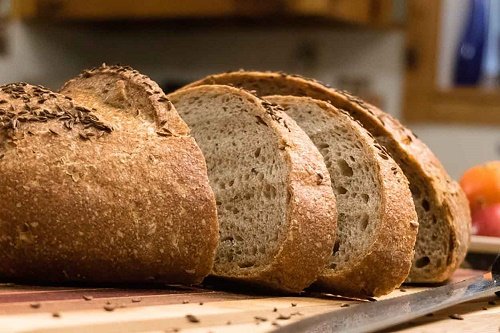
How to replace baked goods
A good alternative to bread is diet bread. This product is sold in all stores. You need to carefully read the product packaging so as not to buy bread that is not dietary. If it contains sugar, then it is not a weight loss product. It is best to buy extrusion ones, which are the most useful. This is a natural product that looks similar to popcorn.
Biscuit cookies are a good substitute for the usual bread. This is a very simple product that consists of flour, water and salt. The low calorie content of the product allows it to be included in the diet.
Bread is an indispensable food product, both for a person who is not watching their weight, and for someone who adheres to proper nutrition. The main thing is to know moderation in everything and eat as much bread as necessary to maintain the correct calorie content throughout the day.
Calorie content in a loaf and a piece of bread
Since all types of bread have different composition and weight, it is difficult to give a definite answer about the number of calories contained in one loaf. But determining its calorie content yourself, by arithmetic calculations, is not difficult. To do this, you need to know the type of baked goods and its exact weight, and then use the formula to calculate: from the calorie table, take the number of calories per 100 g and multiply it by the number of grams in the loaf. For example:
- Wheat bread weighing 600 g contains 242 kcal per 100 g, that is, 6 * 242 = 1452 kcal are needed;
- A loaf of Borodinsky weighing 350 g – 728 kcal (3.5 * 208).
So, knowing the calorie content and weight of the loaf, you can find out the weight of one piece and calculate the number of calories in it. On average, a piece of white bread weighs about 25 g, black - 35 g, a loaf - 20 g, and the thickness does not exceed 0.5 cm. To calculate, you need to cut the loaf into approximately equal slices and divide the total weight by the number of resulting pieces, and then calculate calorie content
For example:
- If you cut a 500g loaf of white bread into 18 pieces, each piece will contain approximately 67 kcal ((5*242)/18);
- A slice weighing 35 g, cut from a Borodinsky loaf (350 g), has 72.8 kcal.
The benefits of bread product
The product is a “supplier” of vitamins such as A, E, list B, PP and others. It contains macroelements:
- chlorine;
- sodium;
- potassium;
- phosphorus;
- sulfur;
- silicon;
- calcium.
It also contains trace elements: iron, zinc, copper and manganese.
Based on the composition of nutrients, we can say that this bakery product is necessary for the body. But which variety is best to consume, everyone chooses for themselves individually, considering the caloric content of the given varieties. White wheat made from fine flour does not contain any beneficial substances.
It also contains a lot of vegetable protein and Omega-6 fatty acids. Due to the fiber present in it, the product takes a long time to digest and assimilate, which keeps you feeling full for a long time. And this is an important component in dietary nutrition.
Sandwiches: calorie supplements
Sandwiches, hamburgers, hot and cold sandwiches with various toppings are favorite snack options. But when a person goes on a diet, one must categorically refuse “fast food”, given the high calorie content of bread and the no less calorie content of additives. If you like to eat from McDonald's, then we suggest reading about the calorie content of McDonald's products, about safe and unhealthy foods.
On average, one sandwich with additives accounts for 150-400 kcal.
If the daily calorie intake is 2000 kcal (depending on a person’s individual parameters), and for those losing weight this volume is half as much. Tempted by one sandwich with butter, sausage and cheese, the man ate about a quarter of his daily requirement. At the same time, a piece of bread with a few other ingredients is clearly not enough: a snack on the run satisfies the feeling of hunger for only a couple of hours.
This is precisely the root cause of excluding sandwiches from a healthy diet.
Those who cannot imagine a lunch break at work without a couple of sandwiches need to pay attention to supplements with the optimal amount of calories and include them in their diet. Calculation of the calorie content of a product can be carried out according to the same principle as with bread: the total number of calories in the additive is divided by the number of pieces of sausage, butter, cheese, etc.
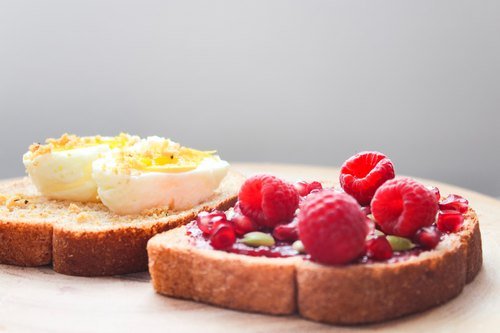
The table below reflects the list of the most common sandwich additives and calorie content per piece:
| Name | Weight | Calories |
| Oil | 4 | 30 |
| Boiled sausage | 36 | 170 |
| Ham | 28 | 84 |
| Salami | 10 | 58 |
| Smoked sausage | 9 | 36 |
| Cheese | 18 | 62 |
| Brynza | 31 | 77 |
| Processed cheese | 18 | 59 |
| Mayonnaise | 5 | 31 |
| Honey | 22 | 84 |
| Fish | 53 | 148 |
| Red caviar | 10 | 102 |
To reduce the number of calories in a sandwich, use bread substitutes and as many fresh vegetables as possible instead of fatty foods.
Very often sandwiches help us out on the road, but this is not the only food that you can take with you. We recommend our article: what to take on the road.
Calorie content of crackers and fried bread
Rusks are very often used as an addition to hot liquid dishes and salads. Recommendations for their inclusion in a healthy diet are associated with the content of a large amount of nutrients and vitamins (magnesium, phosphorus, iron, potassium, sodium, etc.), as well as a low level of gluten, which helps normalize the functions of the digestive tract.
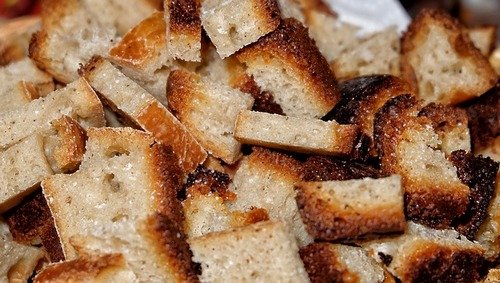
Since drying occurs without any additives, the calorie content of crackers is practically no different from the calorie content of the bread from which they are made.
Per 100 g of product of different varieties there are:
- 331 kcal – loaf;
- 210 kcal – black bread;
- 395 kcal – breadcrumbs;
- 180 kcal – rye bread;
- 410 kcal – crackers with raisins;
- 230 kcal – gray bread.
Croutons, like biscuits with bread, are a good base for snacks and sandwiches. Fried crispy bread supplies the body with a lot of carbohydrates, zinc, phosphorus, copper, potassium, calcium, vitamins PP and B, as well as saturated and polyunsaturated acids. The calorie content of croutons directly depends on the type of bread and the additive on which it is fried. When using 3 g of butter (23 kcal) and a piece of black bread (73 kcal), the snack will add 96 kcal. On average, 100 g of croutons can contain up to 407 kcal.
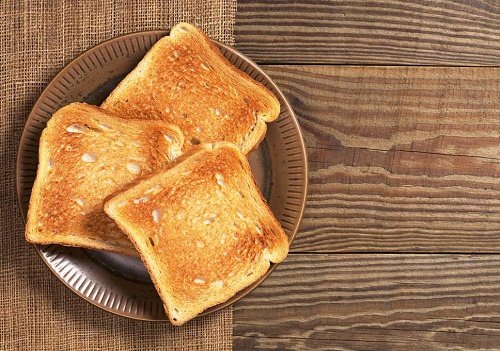
Should I give up bread completely?
Theoretically, completely eliminating bread from the diet is possible. However, it should be understood that the body must take the vitamins that baked goods contain from somewhere. Sometimes it's better to reduce the amount of bread and choose low-calorie options. Several reasons to use this product:
- By eating only 200 grams of bread a day, your body receives the minimum supply of proteins needed by an adult. The calorie content of white bread is higher than that of black bread.
- A snack in the form of a sandwich during an active life is a good alternative to fast food. It is better to make it with a piece of lean meat and vegetables.
- Bran bread helps the gastrointestinal tract. It cleanses the intestines and promotes weight loss.
Benefits and harms
The benefits and harms of bread are determined by several criteria:
- the type of flour used;
- additives that increase shelf life and improve appearance;
- the caloric content and energy value of the product is determined by the technological process, starting with the preparation of products and ending with the packaging of finished loaves;
- compliance with consumption standards, nutritional culture;
- characteristics of the body.
Many experts agree that the leaders in the list of flour products of dietary value are products made from wholemeal rye flour and whole wheat flour, as well as bran and whole grain bread. According to research, these varieties have the maximum amount of essential microelements. Why? The process of processing raw materials for the production of flour involves preserving in the final product the proportion of sprouted grains that have the greatest benefit.
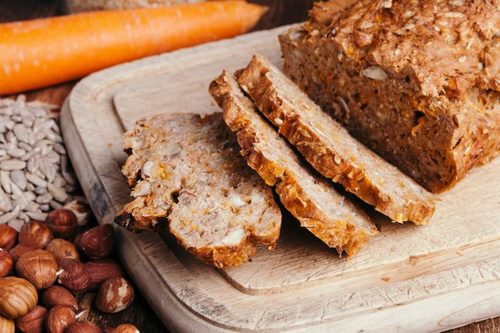
Photo: 8fit.com
Wheat bread, which for centuries was considered a privileged food, today is considered a “harmful” product. Dietary baked goods now include products with a 20% grain husk content. Bread made from wholemeal wheat flour with bran quickly and for a long time saturates the body and normalizes intestinal function. Since it contains “slow carbohydrates”, which are absorbed by the body gradually, without being stored in reserve in the form of fatty tissue.
It is also not recommended to overuse yeast. They destroy the beneficial substances in the product and cause dysbacteriosis by reacting with flour carbohydrates even at the dough kneading stage.
When choosing dietary bread, pay more attention to yeast-free dough (lavash, unleavened flatbread) or to products prepared with sourdough.
We invite you to watch a video on the topic of yeast and “yeast-free bread” from the “Live Healthy” program.
Try to carefully study the composition of the product indicated on the label. Some types of baked goods contain margarine, which supplies the body with large amounts of harmful trans fats and chemical additives. Such baking causes an imbalance in the digestion process.
We invite you to watch a video from the Live Healthy program about margarine and butter.
To better manage your calorie content, bake your bread at home.
The table below will help you understand which bread contains more nutrients and what its energy value is:
| Rye | White | Black |
| Squirrels | ||
| 8.5 g | 7.6 g | 1.72 g |
| Fats | ||
| 3.3 g | 3.2 g | 0.31 g |
| Carbohydrates | ||
| 48.3 g | 50.8 g | 11.29 g |
| Cellulose | ||
| 5.8 g | 2.4 g | 2.8 g |
| Calcium | ||
| 24 mg | 33 mg | 35 mg |
| Potassium | ||
| 166 mg | 100 mg | 74 mg |
| Sodium | ||
| 660 mg | 681 mg | 49 mg |
By the way, if you want to know which bread is better, white or black, we suggest watching a video on this topic.
Bakery product ideas for losing weight
Healthy bread can be made in your home kitchen. In this case, you can be sure that no harmful ingredients have entered such a product. The simplest and most reliable thing is to prepare unleavened flatbread. Minimum ingredients, maximum benefits.
For this you will need:
- flour - 3 cups;
- water – 1 glass;
- salt – 1 teaspoon.
Gradually pour 1 cup of water into a bowl with salt and flour, knead the dough so that there are no lumps. You should get a stiff dough that does not stick to your hands. Let the dough rest for about 40 minutes. After this, form thin cakes with a diameter the size of the frying pan in which the product will be baked. You need to bake in a dry frying pan, over high heat, until golden brown on both sides.
Bran bread with kefir is also easy to make in your home oven.
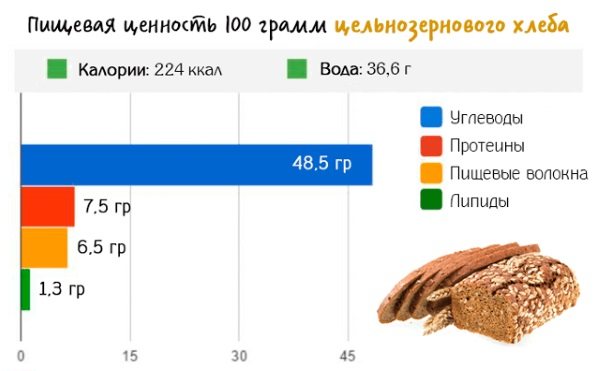
To do this you need to take:
- flour and bran - 2 cups each;
- kefir – a little less (about 1.5 cups);
- vegetable oil – 0.5 cups;
- soda and salt - half a teaspoon each.
Combine the bulk ingredients in one bowl, and the liquid ingredients (kefir and butter) in another bowl. Combine all components, knead a stiff mass. Form 1-2 bars from the resulting dough. Bake in an oven preheated to 180 degrees. Check the readiness of the bread with a dry wooden stick. Baking will take at least half an hour.
Rye bread with bran will turn out delicious; the ingredients needed for this recipe are:
- mixture of rye and wheat flour - 3 cups;
- water – 1.5 cups;
- 1 tablespoon each - dry yeast, vegetable oil, salt and sugar.
First you need to make a dough. To do this, you need to mix sugar with yeast powder, then pour in warm water (but not boiling water!). The composition should give foam. In a separate bowl, mix rye and wheat flour, add salt and vegetable oil. Pour bulk products into the dough and knead the dough. It will become soft in consistency. Let it sit in a warm place for an hour.
Form 1-2 bars from the finished dough, place on a baking sheet, and let steep for another 2 hours. Cook in an oven preheated to 180 degrees for half an hour.
Eating bread on a diet
Bread also contains other useful substances, the presence of which directly depends on the type of product.
The common belief that bread is a “forbidden fruit” on a diet is wrong. If you want to lose weight, be careful when consuming baked goods. To consolidate your results, follow these rules:
- Limit consumption to 50 g (2 pieces) per day.
- Avoid sandwiches with high-calorie additives containing large amounts of fast carbohydrates; do not eat bread with potatoes, rice, pasta, cereals, butter or vegetable oil.
- Give preference to healthy flour products.
- You can eat bread during the day, during meals or separately, but not after 8 pm or 4 hours before bedtime.
- Do not eat hot baked goods, as they contain high gluten content, which makes it difficult to digest food.
We recommend reading the following articles: Balanced nutrition Protein-carbohydrate alternation (BCA) Benefits and harms of apples Calorie content of eggs Benefits and harms of banana Calorie content of rice
Let us separately clarify what kind of bread you should eat in order not to gain weight. Dietary flour products include products containing a low glycemic index, which determines the effect of food on blood sugar levels. Thus, sweet additives and raising agents in combination with premium wheat flour significantly increase the glycemic index, so those losing weight should avoid products that contain these ingredients.
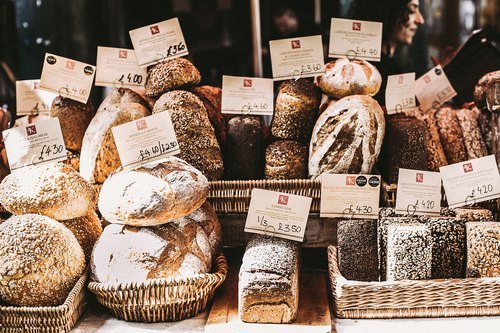
It is recommended to include the following types of bread in your diet:
- Bran. Causes rapid saturation due to the swelling of bran in the stomach, removes waste and toxins from the body. It has a low glycemic index and a high content of vitamins and minerals.
- Wholegrain . Baked goods made from wholemeal white flour extracted from sprouted grains retain vitamins after processing and contain complex carbohydrates that promote satiety. Reduces cholesterol levels.
- Rye. Contains a lot of magnesium, phosphorus, iron and vitamins. Thanks to the large amount of fiber, it normalizes the functioning of the gastrointestinal tract and improves food absorption.
- Wheat grain. The presence of coarse fibers normalizes intestinal function. But the higher carbohydrate content in wheat grains results in a high calorie content of the product.
- Alive. Its benefit lies in the need for a large amount of energy during digestion. The composition includes essential amino acids and microelements.
- Biobread. Preparation involves the use of several types of wholemeal flour and natural sourdough without the addition of raising agents, flavorings, preservatives and flavor enhancers.
- Salt-free or achloride bread. The dough is prepared using whey.
- Buckwheat. A low-calorie and high-carbohydrate product, it is rich in vitamins and minerals that remain in the buckwheat bread.
From this video from the program “Live Healthy!” find out whether or not you can eat bread. The special guest of the program is nutritionist, nutrition specialist, researcher, author of the “bread diet” and the nutritional bestseller “Eat Bread and Lose Weight,” Olga Raz.
Is bread good for the body?
Bread should not be considered a harmful product. A complete refusal of this product in your diet can lead to negative consequences. Due to a lack of B vitamins, a person becomes more prone to depression and is more susceptible to stress. Due to the lack of fiber contained in bread in the menu, a person’s bowel movements are disrupted.
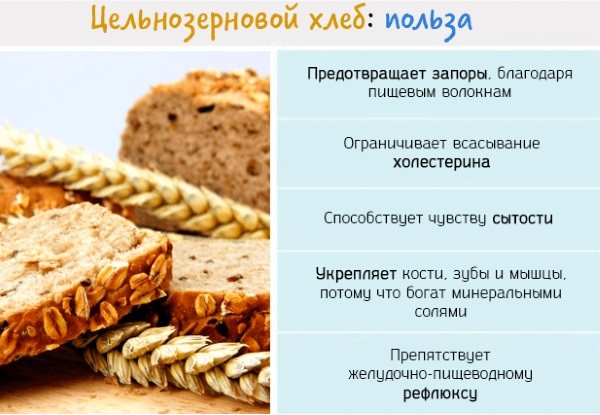
Paradoxically, cellulite can also occur if you don’t eat a little flour. The fact is that bread contains proteins and amino acids that are important for the body. Bread will be useful if you choose healthier types of this product for your diet. In addition, it is important to eat bread in reasonable quantities.
Alternative to bread for losing weight
Bread is popular among people trying to lose weight. They contain iron, calcium, protein and fiber, which are beneficial for the body. Thus, 100-150 g of bread contains the daily intake of fiber, which accelerates the elimination of toxins and waste. But breads have different compositions, and some of them are high in calories and do not contribute to weight loss. Products suitable for diet are prepared by extrusion from peeled or whole grain flour without the use of yeast. Some breads add flax or sesame seeds, which are also good for the body.
Let's compare several popular types:
| Name | Number of kcal. per 100 g | Compound |
| Rye | 360 | wheat bran, margarine, rye flour, yeast, salt. |
| Wheat | 240 | sprouted wheat grains, additives: raisins or dried apricots. Rich in magnesium and potassium. |
| Multigrain | 290 | buckwheat, rice, corn, oatmeal, wheat. |
| Wheat-rye | 310 | wheat and rye flour, water, seeds. They contain a lot of sodium, magnesium, phosphorus, iron, calcium, fiber, vitamins PP, B, E. |
| Wheat-oat | 302 | oatmeal, winter wheat, table salt |
Thus, preference should be given to wheat and multigrain breads that do not contain harmful synthetic additives.
Other common bread substitutes are biscuits, which contain about 300 kcal. per 100 g and pita bread – 110 kcal. per 100 g. Their benefits are due to the fact that only water, flour and salt are used for cooking. The absence of yeast and any leavening agents has a beneficial effect on the figure.
We invite you to use our calculators to properly monitor your health and appearance.
However, pita breads are made only from wheat flour, which should be limited on the diet, so biscuits are considered the best option. They are easy to prepare from any type of flour (barley, pea, bean, etc.). Baking made from unleavened dough can be stored for a long time, making it possible not to worry about the freshness of the bread.
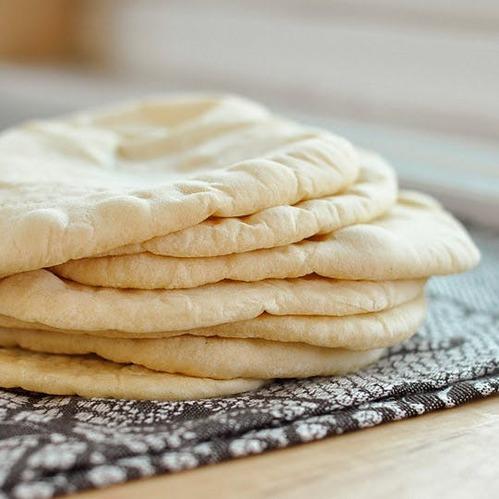
Photo: dir.indiamart.com
It is also recommended to replace your favorite sandwich bread with lettuce and diet bread.
If you have certain diseases and are worried about whether you can eat bread if you have certain diseases, then watch the Health TV program, where this topic is discussed in detail.
How to eat baked goods while on a diet
During a diet, the main rule is not to overuse baked goods. A couple of slices of bread during the day will not harm your figure. And if it is healthy bran bread or yeast-free bread, it will even benefit the entire body.
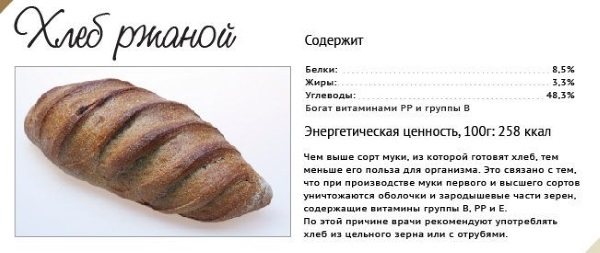
If it is difficult to give up white bread while on a diet, then it is best to eat it in the morning. Breakfast is quickly digested and is not stored in the form of fat folds on the waist. In this case, it is better to refrain from eating bread in the evening.
